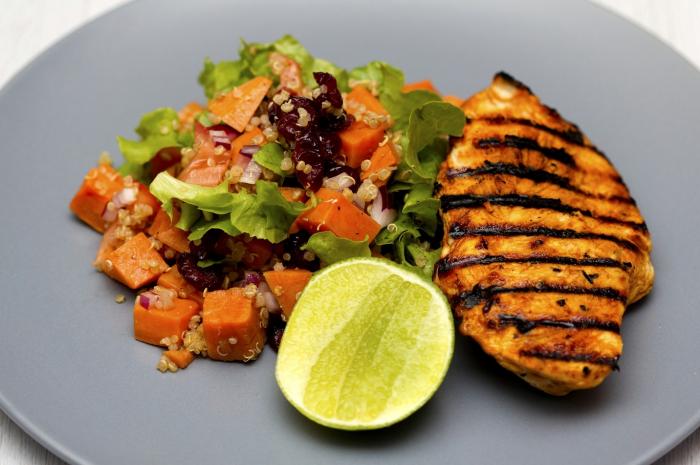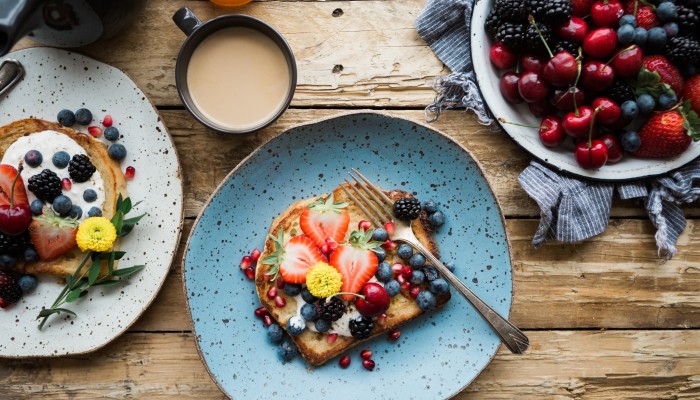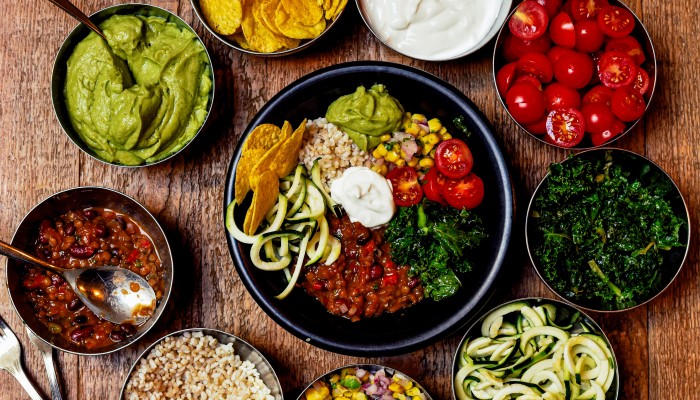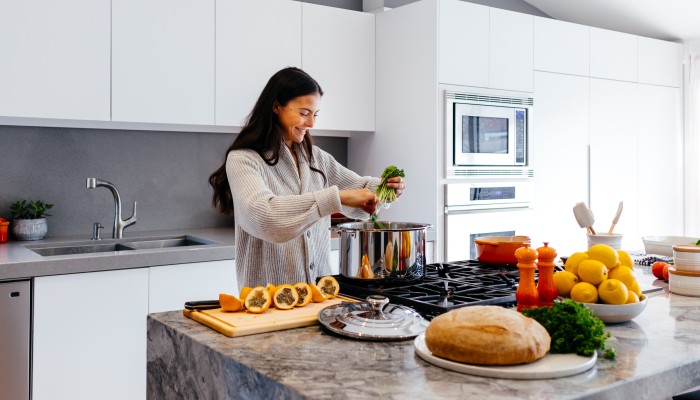- ro's Newsletter
- Posts
- Capture Deliciousness: Best 10 Tips for iPhone Food Photography
Capture Deliciousness: Best 10 Tips for iPhone Food Photography
Do you like documenting your culinary adventures with photos? A food blog or an Instagram culinary account has been on your wish list for a while now. As a food photographer, it's time to boost your game. Your meal may look as wonderful as it tastes, thanks to a few accessories: your iPhone camera, or a photo enhancer provided by VanceAI Image Enhancer, which helps you to enhance the photo details of your food picture. As with any other sort of photography, outstanding smartphone food photography requires excellent lighting, composition, post-production, and of course, an exciting subject.
For this reason, these food photography techniques are not just for iPhone users. My iPhone happens to be the best smartphone camera, but any smartphone camera will work perfectly well here. So, how do you go about doing food photography? Listed here are our top ten iPhone food photography tips. Let's do some food photography with iPhone together.
Best 10 Tips for iPhone Food Photography
Use your smartphone's camera to your advantage

There are many applications available that allow you to fine-tune the camera settings on your iPhone. A AI Image Upscaler is our personal favorite. It utilize AI image enlarger for high resolution quality image and make photo hd. To obtain the optimum exposure and look for your iPhone food photography, use camera options like ISO, shutter speed, white balance, and manual focus. While also offering some incredible compositional overlays.
Shoot your meal at a 45-degree angle

The standard 45-degree angle provides a natural appearance that brings off the most pleasing aspect of your food, even if photographing from unusual angles is appealing. You may also get a better sense of context by capturing a little of the foreground and background.
A photo taken at a 90-degree angle from directly above your plated food may look better in certain instances. You'll have to play around with different settings to see what works best for your subject matter.
Use natural lighting to get more lifelike colors
When photographing food on an iPhone, the essential advice is to utilize natural light. The use of artificial lighting may distort the colors of your topic. When using a flashlight, you may see distracting reflections on the surface of the water.
You may avoid these blunders if you photograph in natural light. The most authentic colors for your food scene will come from natural light. Take pictures of your meal either outdoors or near a window. You may use a piece of paper or a white curtain to soften the light if it's too bright outside.
Shooting in direct sunlight might result in harsh shadows, so try to avoid that. For food photography, a cloudy day is an excellent choice. The light is softened and diffused by the clouds, making your food shot seem better.
Shooting with the hands-free
The best way to improve your food photography is to remove your phone from your hands. As a result, the whole procedure becomes more natural and easy.
A tripod with a movable middle column is recommended. It's a lifesaver when it comes to getting the camera up and out of the way. You'll need one of these low-cost Super Clamps to secure your phone to the tripod. Avoid over-tightening since the grip on your iPhone might be fatal if you do. You won't be able to drop your phone into the soup, at least.
Utilize the Illuminance

When shooting with natural light, you'll need to pay attention to how the shadows fall. Strong shadows have the potential to provide visually stimulating effects. Try to avoid photographing food shots in severe shadows as a rule of thumb, though. It takes center stage and detracts from the focus of your topic.
Shooting in direct sunlight is an unavoidable need at times. Use a sheet of paper or a reflector to reduce the harshness of the shadows. The shadow side is where it should be. Make sure your reflector is towards the sun while using it. Your subject's shadows will be softer since the sunshine will reflect upon them.
Use iPhone photo editing
There are many editing options available on the iPhone when it comes to taking better photos. Newbies to photography may find it difficult to alter their images directly in the iPhone's picture app due to the lack of expertise with aspects like exposure, contrast, and saturation. An app is ideal for starting if you only want to apply a filter to your photos. Once you've gotten the hang of editing images on an iPhone, you should be able to get whatever you need from the "edit" feature on the iPhone itself once you've mastered it. Also, you can use the image quality enhancer to level up your photos.
Ensure the background is neutral
When taking a shot of food, the backdrop is critical. The viewer's focus will be diverted from the meal if the backdrop is distractingly cluttered or colorful. It's much easier to draw attention to the food when you're working with a backdrop that isn't too busy. This does not imply that the background must be white, but it should complement the subject rather than repress it. Generally speaking, dark-colored food appears best when placed against a darker backdrop, while light-colored food looks best when set against a lighter background. Food presented on wooden surfaces, such as tables and chopping boards, tends to look its best.
Get creative with color in your iPhone food photography

Colors are your best allies when it comes to food photography. They are a symbol of freshness and flavor. You may put them to a lot of different uses. For peaceful food shots, use the same shade of the same color. Vibrant and dynamic images are created by using colors that oppose one another.
It's common knowledge that particular colors are associated with different flavors or culinary products. For example, pastel colors are associated with confectionery, like cakes and sweets. Studies show that people's perceptions of taste are influenced by color. The scientific findings may be put to good use in food photography. When we see photographs of bright yellow lemons, our brains are fooled, and we begin to salivate.
Organize your food in an appropriate way
The final picture will be significantly influenced by how you arrange your food. The placement of each element in the image should be carefully thought out to achieve superb food photography composition. A snapshot of a dirty supper on a plate is the worst. Photographing food like that is not authentic. For this reason, it's essential to provide your meals in an appealing and balanced approach.
It's fascinating to chop up fruits and vegetables and make patterns on a plate or baking dish since you may cut them into similar shapes.
Using food styling skills

Food styling abilities are required for professional food photography. A simple change in the location of your food subject may have a profound impact on the finished picture. Pay attention to the overall design of the piece. To get the ideal composition, follow the golden ratio or the rule of thirds. Make sure that everything is arranged in a visually appealing manner. Cutting up certain things or using tweezers to pick up tiny objects may be necessary. Get additional eye-catching visuals by adding some fresh herbs or crunchy toppings. You may also begin shooting foods that need the addition of different embellishments on a more general basis. Smoothie bowls are delicious and versatile, and there are many variations to try.